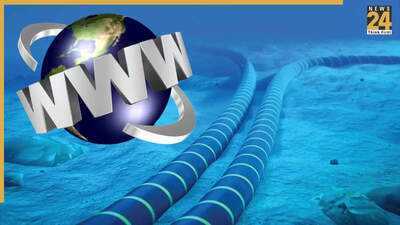
The Backbone of Global Internet Connectivity
Many people assume that their mobile internet is delivered via satellites or cell towers. However, the truth is that a staggering 99% of global internet traffic is transmitted through undersea cables that traverse the oceans. This fact became widely recognized when a cable was severed in the Red Sea, leading to internet outages in various countries, particularly in the Middle East. These robust undersea cables form the foundation of our global internet infrastructure. Here’s a comprehensive overview of their ownership and functionality.
Construction of Undersea Internet Cables
Undersea cables are not typical wires; they are crafted using advanced technology, making their manufacturing process intricate. These cables utilize fiber optic technology, essential for transmitting data at light speed. Initially, ultra-thin glass fibers are inserted, allowing data to travel through laser beams nearly at the speed of light. Subsequently, layers of copper, plastic, and steel are added to facilitate electrical flow and shield the cable from oceanic pressures, rocky terrains, and fishing nets. Once all layers are applied, the cable becomes significantly thick.
The Process of Laying Undersea Cables
The installation of these cables beneath the ocean is a monumental endeavor. As per OceanIQ, a company linked with the Global Marine Group, the process involves multiple stages: route planning, marine surveys, obtaining necessary permits, designing the cable system, manufacturing, laying the cable underwater, and finally, activating it. The cable is initially loaded onto a vessel and coiled around a large drum for controlled release during installation. The ship then navigates a predetermined path, gradually deploying the cable into the ocean through a slide-like mechanism, ensuring accurate placement on the seabed. After installation, a Remote Operated Vehicle (ROV) is dispatched to verify the cable's correct positioning and security.
Ownership of Undersea Internet Cables
Across the globe, millions of kilometers of internet cables have been installed. Historically, telecommunications companies owned most of these undersea cables. Various telecom firms would collaborate in consortia, allowing any interested party to utilize the cable. However, this model evolved in the late 1990s when numerous private companies began laying their own cables. Today, both ownership models coexist. Recently, major content providers such as Google, Meta, Microsoft, and Amazon have emerged as significant investors in this sector.
-
Shocking benefits of chewing basil leaves on an empty stomach daily for 14 days

-
If you are struggling with the problem of hair fall, then they can do big work

-
7 important suggestions for raising children

-
Disgraced designer Alexander Wang has returned to NYFW after a years-long exile — but can he make a full comeback?

-
Earning money from reels is easy, just adopt these tricks of Instagram
